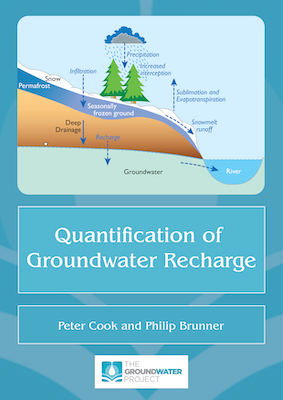Hydrogeologists should understand how groundwater recharges aquifers, the methods available for quantifying this component of the water budget, and the strengths and weaknesses of the different methods. Understanding the sources of recharge can be important for predicting the impacts of land use change and climate change on groundwater resources and for determining the vulnerability of groundwater resources to contamination by human activity. Recharge rates are also important input parameters for many groundwater models—models that are essential tools for predicting the impacts of groundwater extraction.
Changes in recharge rates can have important implications for groundwater resources and groundwater dependent ecosystems. Decreases in recharge rates—for example, during drought or due to climate change—can lead to declines in groundwater levels, leading to reductions in spring and river flows and adverse impacts on groundwater-dependent ecosystems. Increases in recharge rates—such as those due to urban development, land clearance or the development of irrigated agriculture—are often linked to rising groundwater levels and to groundwater flooding and the development of land and river salinity. In arid regions, increases in recharge can cause leaching of salts stored in deep unsaturated profiles, which can increase groundwater salinity. Quantifying rates of recharge and the timescale between changes in land use and changes in groundwater recharge are key to predicting impacts on groundwater systems.
This book begins by describing the relevant recharge processes, some of the principal methods for estimating recharge, and how the recharge rate is affected by rainfall, snowmelt, evapotranspiration, soil type, and land use. It also examines the spatial and temporal variability of recharge, and the spatial and temporal scales at which recharge can be measured. Case studies from around the globe are presented to illustrate the diversity of approaches used to understand and quantify recharge processes. The final chapter discusses the impact of climate change on recharge.

